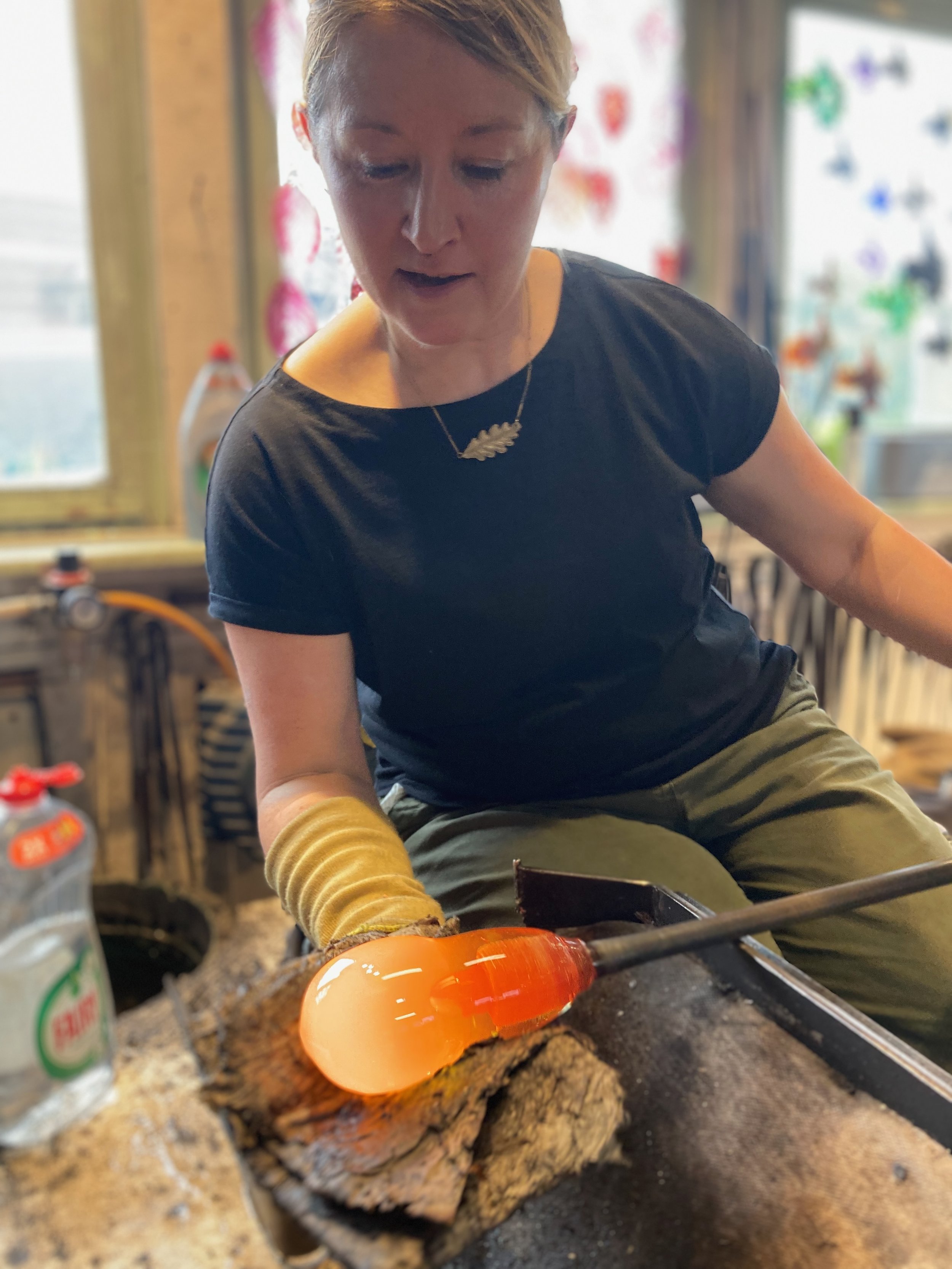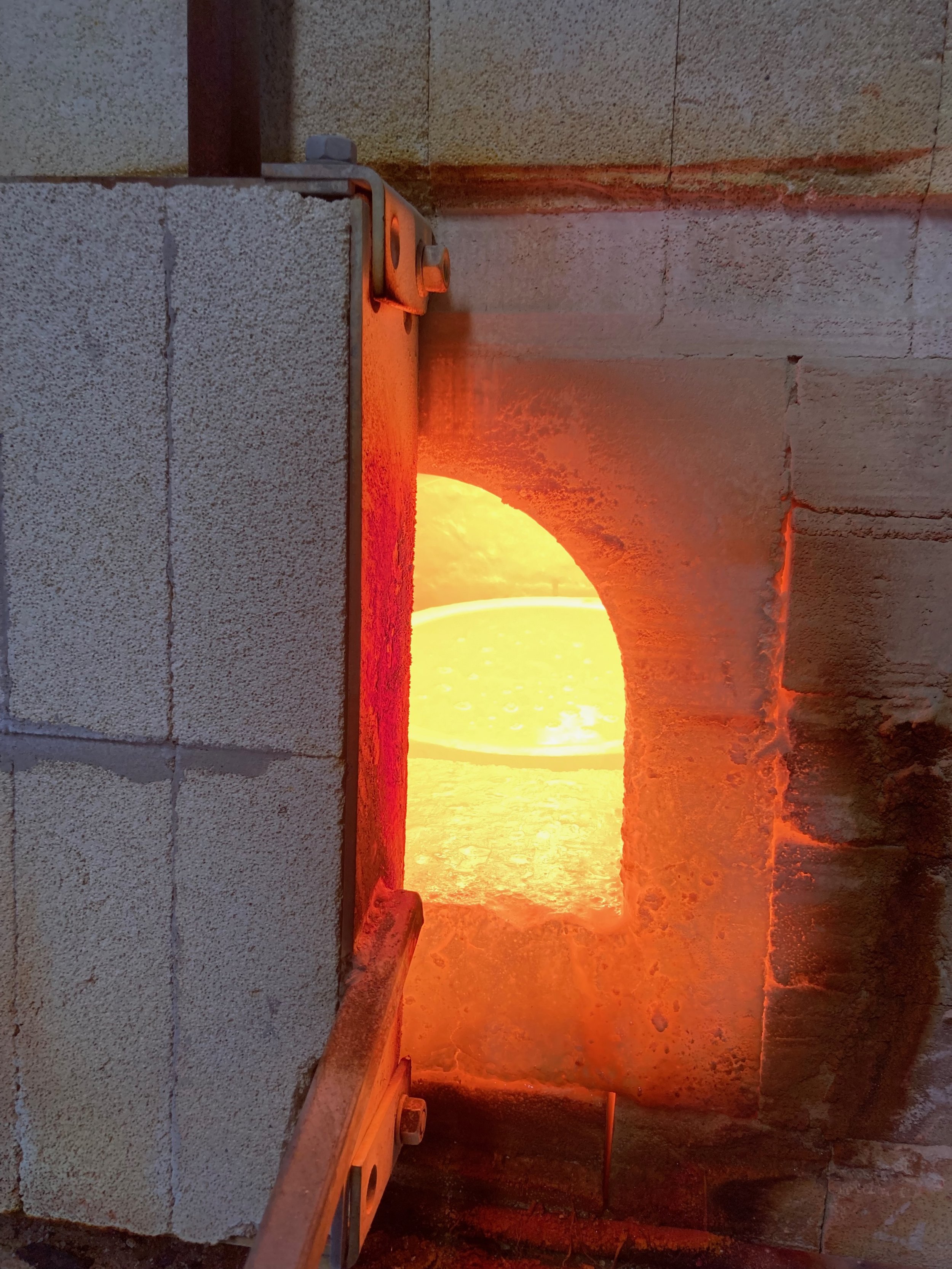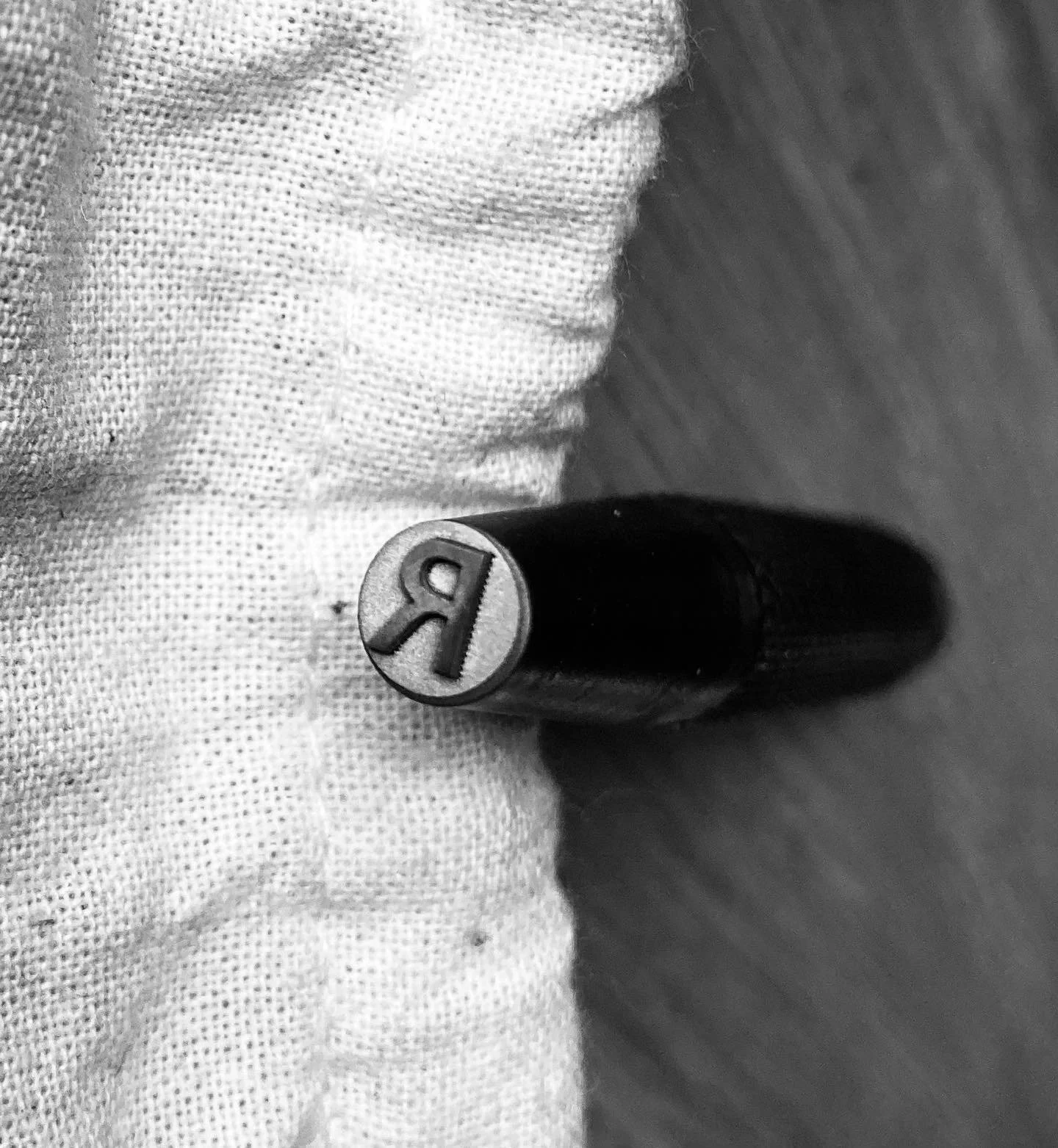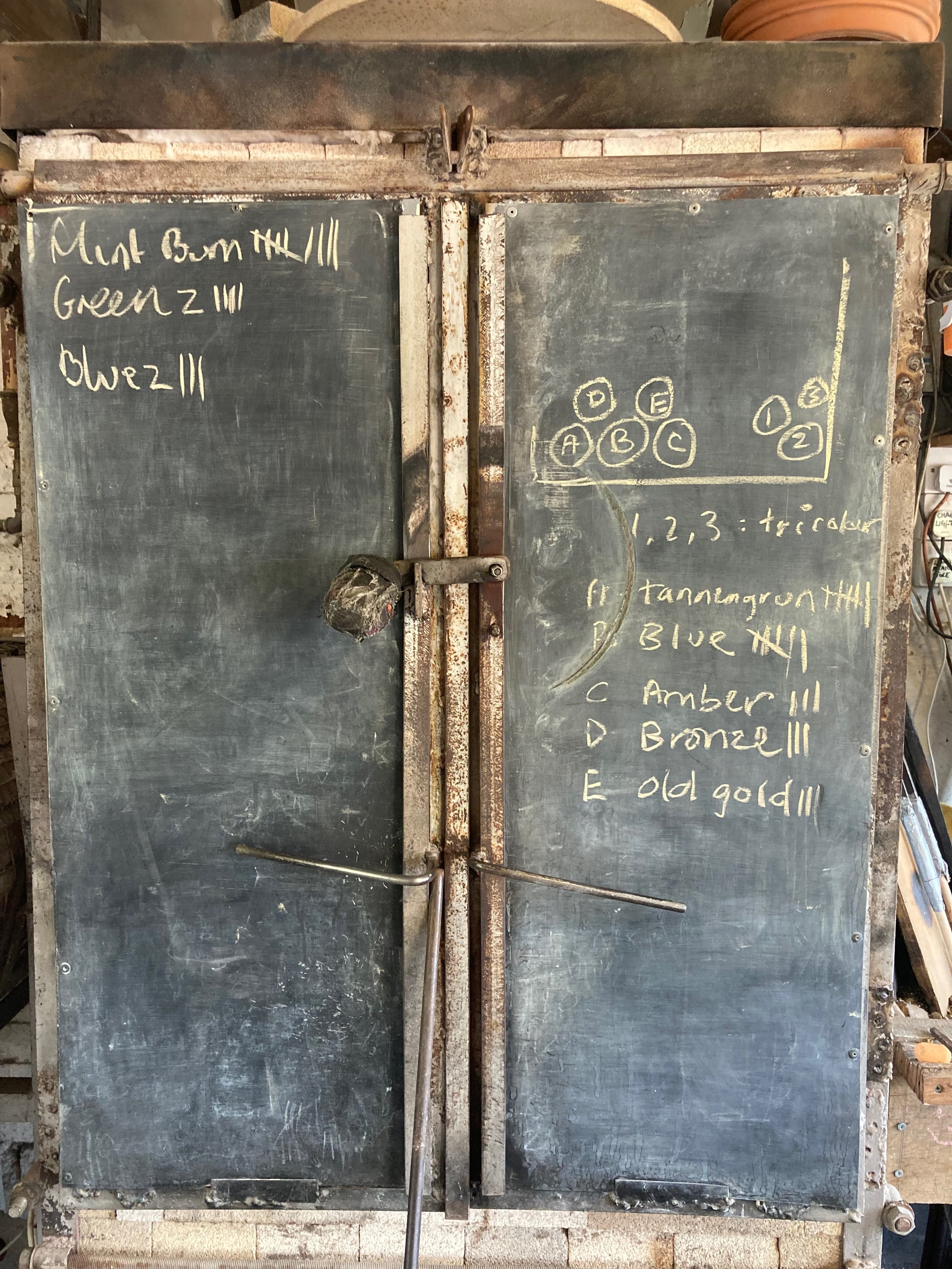Process
I love the fluidity of hot glass, especially lead crystal. It’s very graceful and wants to behave in a certain way. By applying a combination of heat, hand tools, gravity and centrifugal force you can encourage it to do what you want, but it doesn’t always want to co-operate! Glassblowing is physically and mentally challenging, especially when you have one very costly day to make a list of things.
Sometimes the glass suggests a different form during the making process, and I’m always open to its suggestions. Some of my favourite pieces have come about by following my instinct and intuition, and letting the glass deviate from what I had planned to make. There are a million decisions to make during the making of a piece, and one of the most important is knowing when to stop!
The glass is kept at 1100 degrees C, in a gas-fired furnace. The furnace is kept at this temperature constantly, apart from when new glass (broken pieces called cullet) are added at the end of the day to refill the pot. The temperature is raised overnight to melt the cullet.
The reheating chamber or ‘glory hole’ is used to keep the piece warm during the making process, and to direct the heat to certain areas. You need to ensure that the area you want to shape is soft enough to work. Glass becomes pretty solid when it drops much below 700 degrees C.
The final part in the making is when the piece is knocked off the pontil iron (pronounced punty). This leaves a mark on the base where a piece of hot glass has been used to stick the pontil iron to the base so the neck of the piece can be heated and opened. Some people grind and polish this mark away, but to me, this mark is indicative of the hand made process. I melt the pontil mark with a propane/oxygen torch to soften it. Then, to ‘sign’ the piece I have a bespoke letter R stamp, made in the exact font of my logo, so each piece has an R for Raven on the base, showing that it has been made by hand by me, with love!
Once a piece is finished it is placed in the lehr (an annealing kiln) which is kept at 460 degrees and gets filled up over the course of the day (can you imagine how hot it is leaning in to put a piece at the back with some kevlar oven gloves?!). Eyebrows have been frazzled!
Opening the lehr the next day is always a thrill, and can be a bit of an emotional roller-coaster. It’s the first chance I have to hold the pieces I made the previous day, to feel their weight, study their form and see how they interact with light. Coloured glass often looks different when hot, so it’s also the first chance to admire whatever shade of colour things turn out to be.
Here’s a short film about my work process that was made by a high-profile client as part of a commission. It’s a top secret project, so although I’d love to, I can’t tell you who I was working for….yet!








